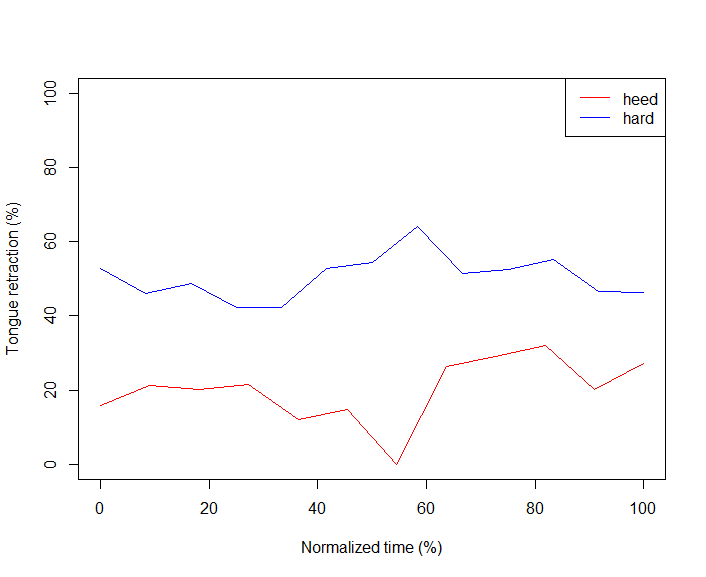Abdulrahman Dallak (IPhD Phonetics & Phonology)
In this two-day workshop we covered some of the state-of-the-art techniques in processing and visualising acoustic and ultrasound data in R. Chris started the workshop talking about how he has been using these advanced techniques in his own research. The workshop was divided into two parts (i) processing and visualising acoustic data, and (ii) processing and visualising ultrasound data. The first parts covered a wide array of techniques such as best practices in data explorations, visualising spectrograms, resampling acoustic signals, formant analysis, windowing, playing sound files within R, plotting spectral slice, plotting acoustic space, plotting formant tracks, etc.
As for the second part of the workshop, it addressed advanced techniques in processing and visualising ultrasound data. Chris presented three ways of analysing ultrasound data (i) through contour fitting, (ii) through analysing the ultrasound images themselves based on ‘line of interest’, and (iii) through analysing the changing pixel intensities in ultrasound images. He started this part of the workshop by exploring the data. Then, he showed us how to fit tongue and palate contours dynamically. Next, how he moved on to how to read and interpret tongue contour plots. Chris also addressed some crucial aspects with measuring tongue contours. That is, he explained in detail the differences between Cartesian and polar coordinate systems and how to transform the coordinates of the spline data from cartesian to polar and vice versa. Similarly, how showed us how to calculate angular coordinate (known as theta θ) and radial coordinate (known as r). One interesting aspect of this part is the fact that dimensionality reduction techniques such as PCA can be applied to ultrasound data. This is a robust addition to the analysis along with the ability of plotting PC scores in order to unpack the nuance of the dynamic articulation.


The plot shows that the vowel in ‘hard’ is more retracted than that in ‘heed’; the higher the value the more retracted the tongue.
Yes, it was an intense, but exceptionally enjoyable, workshop. Some aspects of the workshop that I found very helpful include using functions as this helps make the analysis quicker and save time instead of repeatedly copying and pasting the same codes. The presenter went through many functions that he has created and showed us how to incorporate them in our own analysis. Another aspect that I found entertaining is when doing the exercises in groups. This helps us learn closely from each other and crucially consolidate our understanding of the codes being presented. I can’t finish this reflection without talking about the ‘locator()’ function. It is amazing how interactive this function is. It makes it so easy to index the points of interest in any ultrasound image for further analysis. I’ll definitely adapt it in my own research. Thanks to Chris for such a great workshop and to the organising team for making it possible.